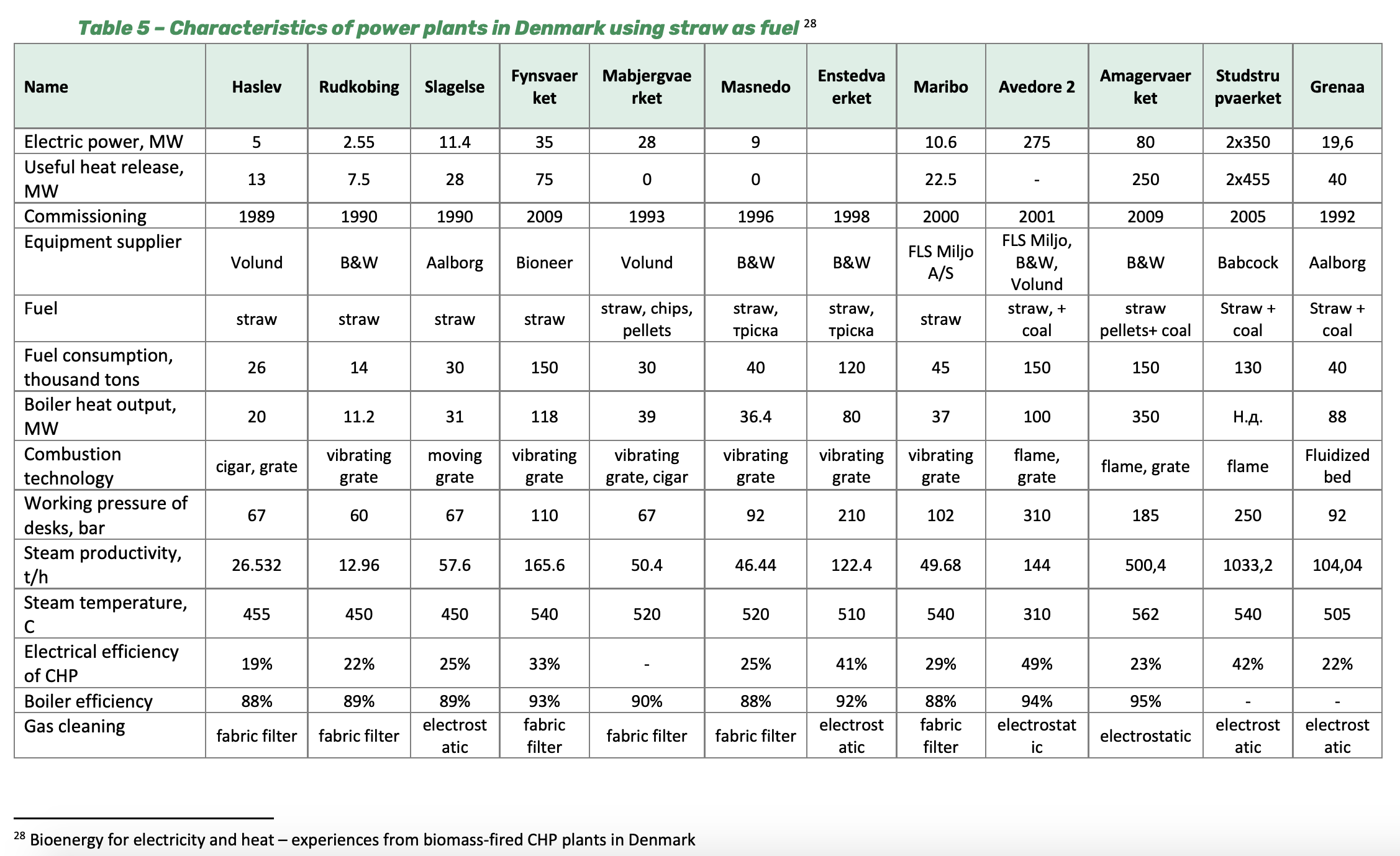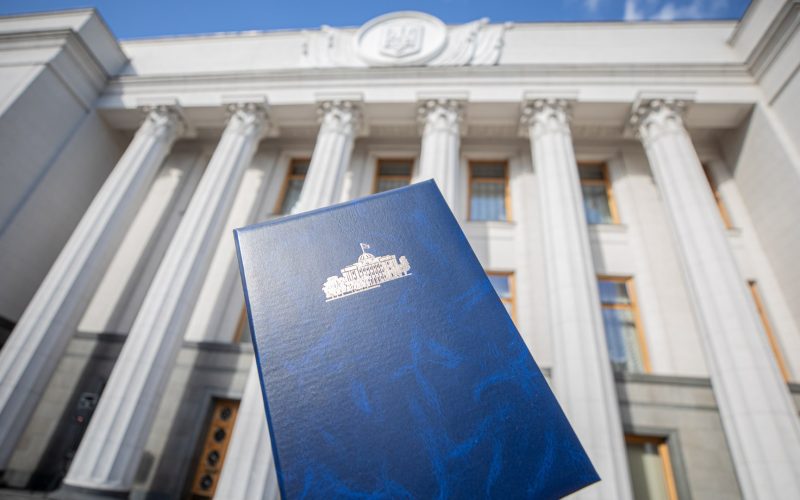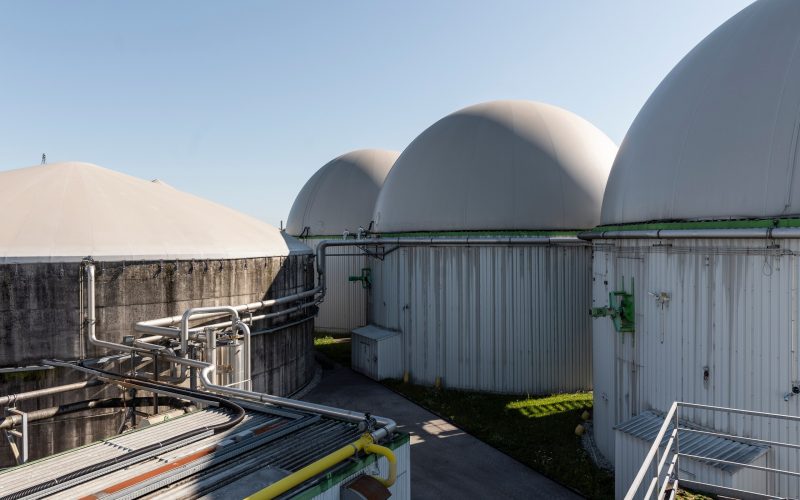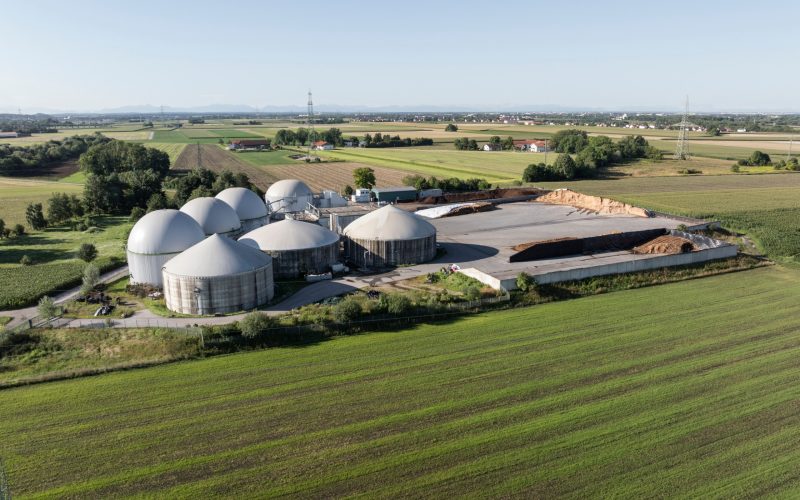Denmark’s pathway to world leadership in renewable energy
In this country the leading manufacturers of agricultural waste equipment are concentrated. We share interesting material about what Denmark is doing and why it succeeded, from UABIO expert Vitalii Zubenko.
Historically, Denmark has a low level of forest cover, which has given impetus to the rapid development of agricultural waste use. In addition, together with straw in the Scandinavian country have successfully learned to burn wood chips, solid waste, and fossil fuels in boilers.
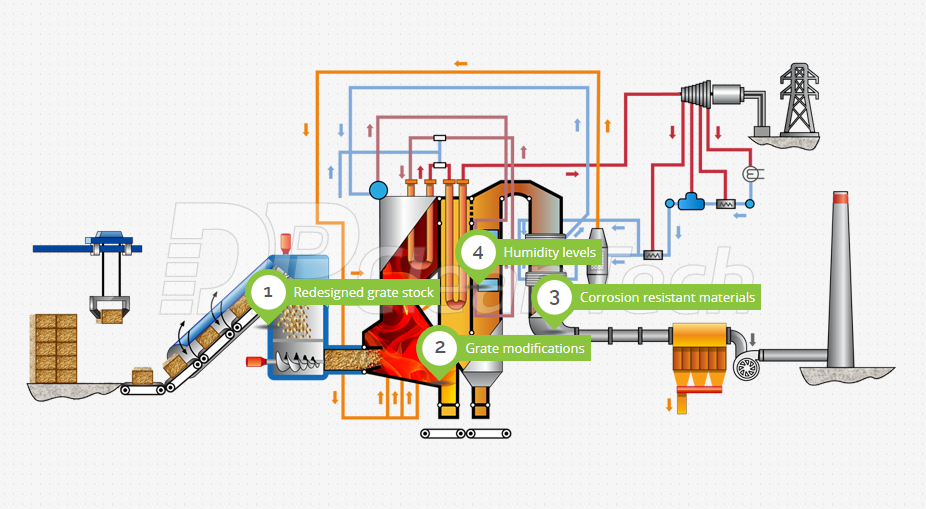
Facts
- Solid biomass (wood, straw, and solid waste) accounted for 64% of all renewable energy sources in Denmark in 2018. Wood accounted for 75% of solid biomass, while solid waste and straw accounted for 13% and 12%, respectively.
- Straw, wood pellets, and chips have mostly replaced coal in the electricity and heat production sectors.
- The total consumption of primary energy from straw in Denmark was 17.6 thousand TJ (about 1.2 million tons with a calorific value of 14 MJ / kg), which is 41% more than in 1990.
- Large TPPs consume 3.4 thousand TJ (240 thousand tons), small – 3.5 thousand TJ (250 thousand tons).
- Consumption of straw for electricity production has increased more than 12 times over the past 30 years and reaches 4.5 thousand TJ (320 thousand tons).
- About 1.4% of electricity in Denmark is produced from straw.
- In district heating systems, 8.2 thousand TJ (585 thousand tons) of straw are used for heat production.
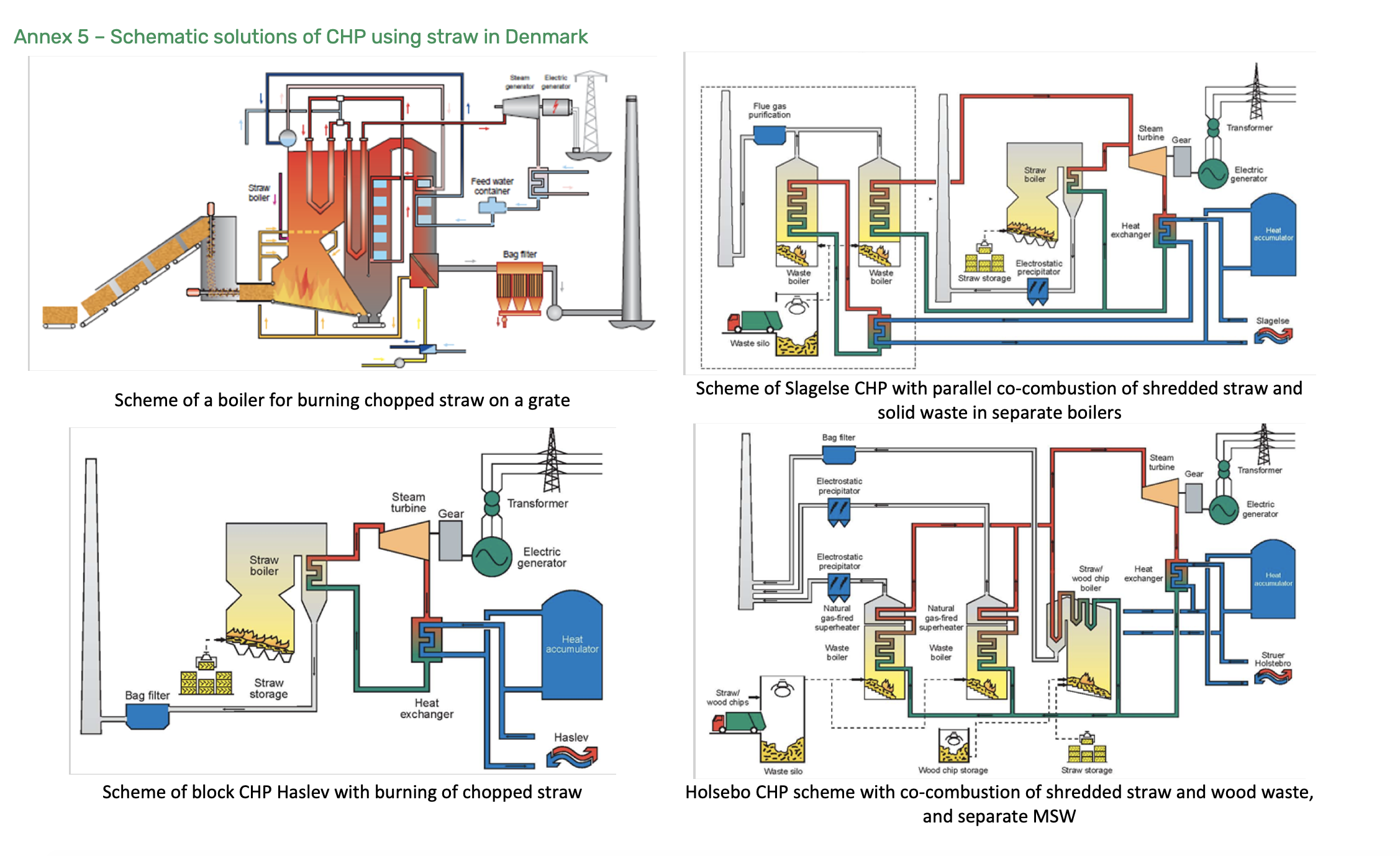
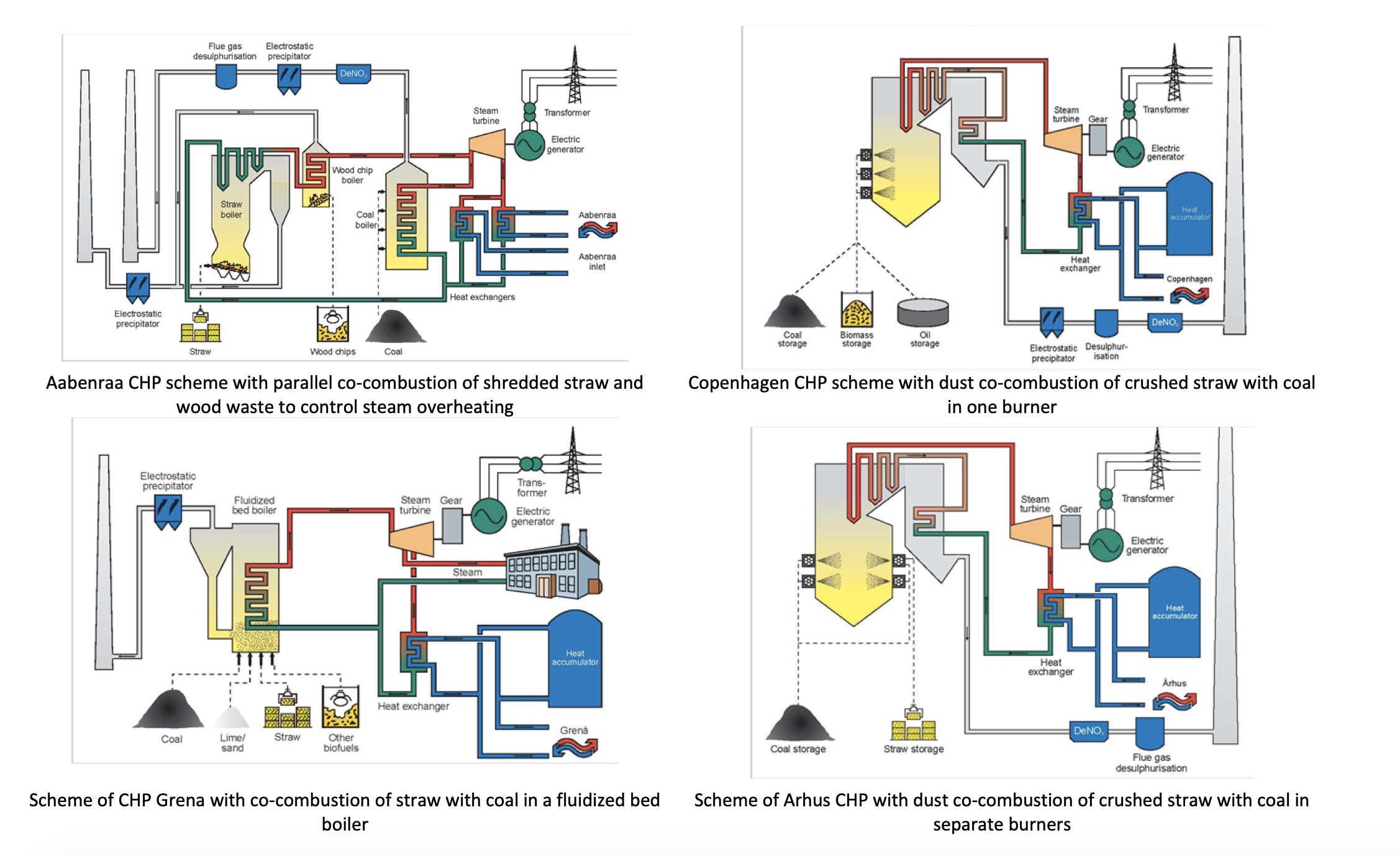
Why did Denmark succeed?
– high taxes on fossil fuels and imported energy resources;
– ban on the open burning of straw in the fields, which was a significant factor that contributed to the reorientation and rapid development of energy use of straw;
– long-term energy planning and government support which have contributed to the creation of engineering companies and factories for the production of new specialized equipment;
– decentralization in the field of heat supply which has contributed to the creation of a large number of energy cooperatives, co-owners of which were both fuel suppliers and consumers of heat energy;
– cooperatives that were created independently determined the level of tariffs for thermal energy, fuel purchase prices, and the level of other operating expenses;
– combined heat and power production;
– the possibility of using different types of fuel and the organization of co-combustion of biomass with coal at existing coal-fired power units;
– high operating parameters of steam (pressure 67-200 bar, overheating temperature to 455-540 ° C) allow to reach high efficiency of boilers and electric efficiency of thermal power plants;
– high environmental requirements for emissions of pollutants into the atmosphere.
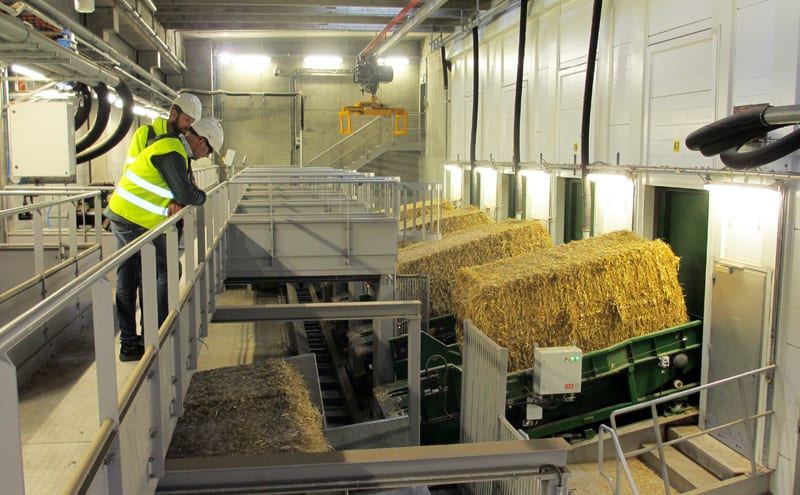
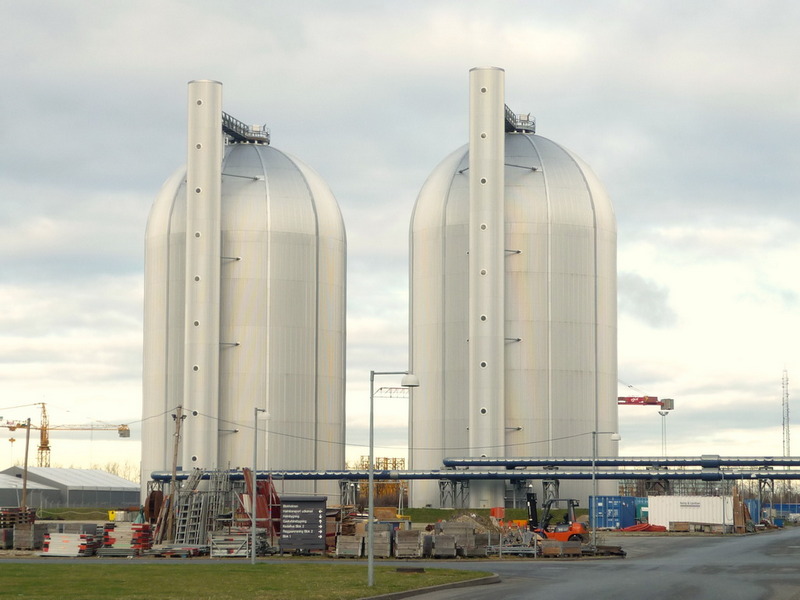
Successful projects
- TPP in Lisbjerg. The straw-fired power plant in Lisbjerg was commissioned in 2016. In Denmark, it is one of the largest in its class. This TPP provides 20% of the district heating demand of Aarhus, Denmark’s second largest city, through producing of 38 MW of electricity and 78 MW of heat. The Lisbjerg thermal power plant burns up to 240,000 tons of straw per year, which is delivered from farms nearby. TPP can also operate 50% on wood chips.
- Centralized boiler house in Hvidebek. A typical thermal station Hvidebek (Denmark), which provides heat to 560 consumers, is equipped with a boiler with a capacity of 5 MW. It operates on mixed fuels: straw (60%) and waste of various origins (40%). Straw is chopped with a scarifier before feeding into the boiler. The production of thermal energy at the station is 66 thousand GJ, straw consumption – 3.8 thousand tons, the level of particulate matter emissions – less than 40 mg / nm3. Capital expenditures for the construction of a thermal station (excluding the costs of construction of thermal networks) reach about 12.25 million dollars.
- TPP in Avedore. The Avedore Power Plant (Danish: Avedøreværket) is a combined heat and power plant located in the city of Avedore, south of Copenhagen, and is owned by Orsted A/S. This is a high-tech station, one of the most efficient in the world. The TPP has two units with a total electrical capacity of 793 MW and thermal capacity of 918 MW. In addition to the use of coal, oil and natural gas, the TPP operates on straw. The straw installation is equipped with a boiler with a vibrating grate and was put into operation in June 2009. The boiler operates on large straw bales weighing 500 kg. This unit is capable of providing up to 35 MW of electricity and 50 MW of heat from straw. Consumption is about 170 thousand tons of straw per year.
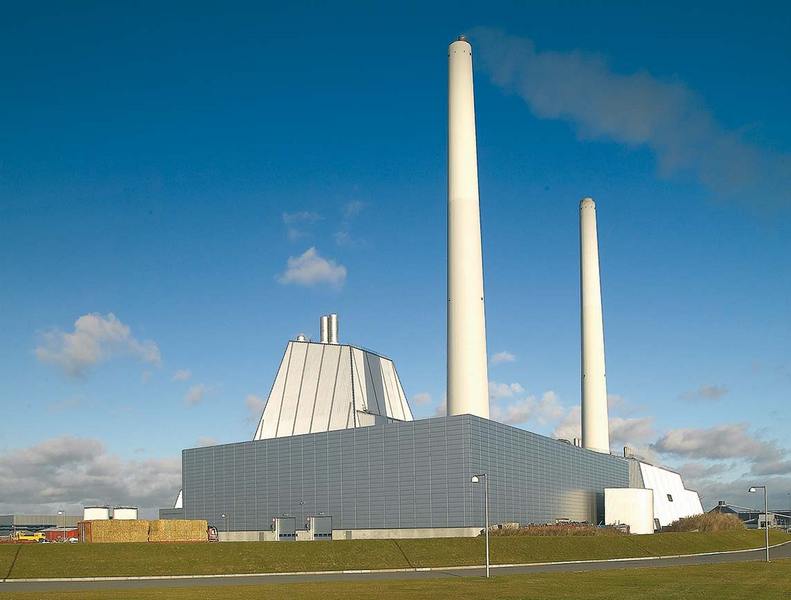
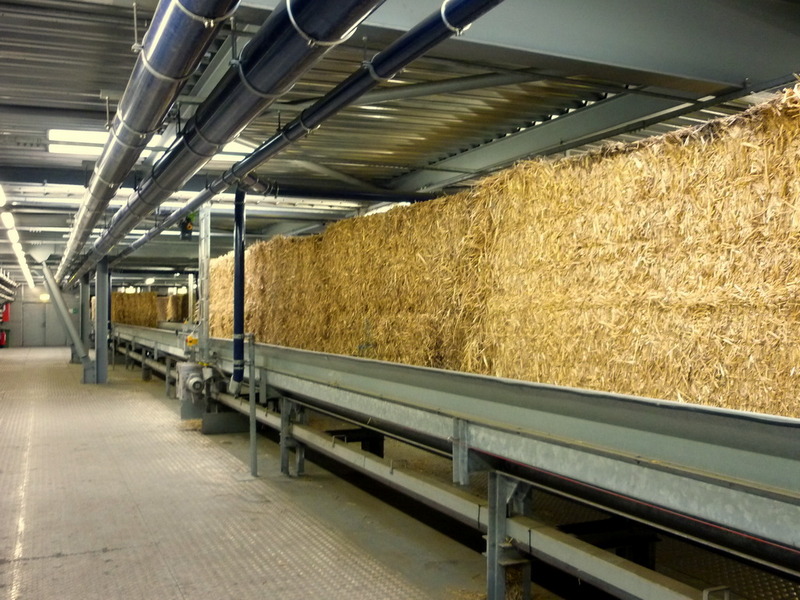
It should be noted that straw in Denmark is purchased from suppliers for energy purposes only if the water content is up to 25%.
